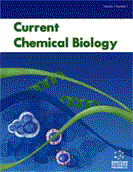Abstract
Background: Protein-protein interactions embody the main target of drug discovery due to their vast presence in physiological mechanisms. Hence, targeting protein-protein interfaces is actually the “holy grail” of pharmacology. Much is known about the binding of small molecules to single peptide chains, but much more is still to be discovered about macromolecular complexes and how binding can be affected by modulators. In this scenario, the link between relative flexibility and druggability of protein targets has two very distinctive faces depending upon the orthosteric/allosteric paradigm of drug action. In the orthosteric paradigm, the ‘hot spots’ for ligand binding are those residues endowed with higher flexibility.
Conclusion: This stems from the large amount of observations pointing to natively unfolded tracts of protein sequences as responsible for protein-protein interactions. Given the interaction with other macromolecules is the core of protein physiological role, in a local (orthosteric) paradigm of pharmacological action, we maximize the probability of perturbing the system by an agent binding in the same place where such interaction takes place: the most flexible parts of the structure. In the case of an allosteric (non-local) paradigm, the focus shifts toward the signal transmission across the protein molecule: this renders the ‘most promising’ binding sites those residues with the most ‘central’ position that have the higher probability, when perturbed by a ligand, to generalize the perturbation to the entire structure. Protein contact network (PCN) formalism allows for a rational, structure based approach to both the drug action modes.
Keywords: Protein flexibility, protein contact networks, intrinsically disordered proteins, protein-protein interactions, orthosteric, allosteric.
Graphical Abstract
Current Chemical Biology
Title:The Two Faces of Protein Flexibility: A Topological Approach
Volume: 12 Issue: 1
Author(s): Luisa Di Paola and Alessandro Giuliani*
Affiliation:
- Environment and Health Department, Istituto Superiore di Sanita, Viale Regina Elena 299, 00161, Roma,Italy
Keywords: Protein flexibility, protein contact networks, intrinsically disordered proteins, protein-protein interactions, orthosteric, allosteric.
Abstract: Background: Protein-protein interactions embody the main target of drug discovery due to their vast presence in physiological mechanisms. Hence, targeting protein-protein interfaces is actually the “holy grail” of pharmacology. Much is known about the binding of small molecules to single peptide chains, but much more is still to be discovered about macromolecular complexes and how binding can be affected by modulators. In this scenario, the link between relative flexibility and druggability of protein targets has two very distinctive faces depending upon the orthosteric/allosteric paradigm of drug action. In the orthosteric paradigm, the ‘hot spots’ for ligand binding are those residues endowed with higher flexibility.
Conclusion: This stems from the large amount of observations pointing to natively unfolded tracts of protein sequences as responsible for protein-protein interactions. Given the interaction with other macromolecules is the core of protein physiological role, in a local (orthosteric) paradigm of pharmacological action, we maximize the probability of perturbing the system by an agent binding in the same place where such interaction takes place: the most flexible parts of the structure. In the case of an allosteric (non-local) paradigm, the focus shifts toward the signal transmission across the protein molecule: this renders the ‘most promising’ binding sites those residues with the most ‘central’ position that have the higher probability, when perturbed by a ligand, to generalize the perturbation to the entire structure. Protein contact network (PCN) formalism allows for a rational, structure based approach to both the drug action modes.
Export Options
About this article
Cite this article as:
Di Paola Luisa and Giuliani Alessandro *, The Two Faces of Protein Flexibility: A Topological Approach, Current Chemical Biology 2018; 12 (1) . https://dx.doi.org/10.2174/2212796811666170717113552
| DOI https://dx.doi.org/10.2174/2212796811666170717113552 |
Print ISSN 2212-7968 |
| Publisher Name Bentham Science Publisher |
Online ISSN 1872-3136 |
 23
23 2
2 1
1 1
1
- Author Guidelines
- Bentham Author Support Services (BASS)
- Graphical Abstracts
- Fabricating and Stating False Information
- Research Misconduct
- Post Publication Discussions and Corrections
- Publishing Ethics and Rectitude
- Increase Visibility of Your Article
- Archiving Policies
- Peer Review Workflow
- Order Your Article Before Print
- Promote Your Article
- Manuscript Transfer Facility
- Editorial Policies
- Allegations from Whistleblowers
- Announcements

















.jpeg)








